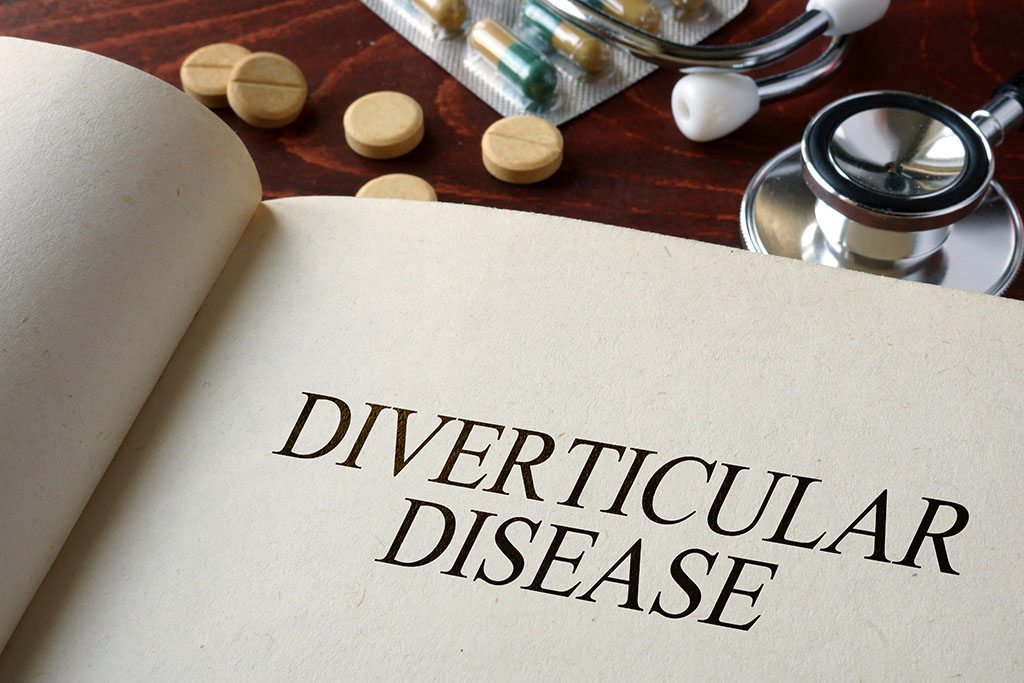Diverticulosis is defined as the presence of diverticula (pouch-like protrusions) in the wall of the large intestine. Diverticulosis affects approximately 60% of the U.S. population by age 60. It affects men and women equally, and it may run in families. Once diverticula form, they do not go away. Diverticulosis may be symptomatic or asymptomatic. The most common presentation of symptomatic diverticulosis is a condition called diverticulitis.
Diverticulitis occurs when a diverticulum becomes inflamed and/or infected. Approximately 5% of people with diverticulosis develop diverticulitis during their lifetime, and the incidence increases with age. The pain of diverticulitis is constant and is usually located in the left lower abdomen. A low-grade fever, nausea and altered bowel habits are common symptoms. Complications affect 15-25% of patients and may include bowel perforation, abscess formation, peritonitis and bowel obstruction. The diagnosis of diverticulitis is best accomplished with a CT scan.
Most patients who develop diverticulitis can be treated at home and for these patients, a 10 day course of antibiotics is very effective. Typically this consists of a course of Ciprofloxacin and Flagyl. Alternatively, in some cases, Augmentin may also be used. Many patients benefit from a clear liquid diet for the first few days until they are feeling better. Generally, the elderly, those who are immunocompromised, those with other significant medical problems and those with high fevers should be hospitalized.
It is generally recommended to undergo a colonoscopy 6 weeks after recovery from diverticulitis. A colonoscopy allows the doctor to assess the extent and severity of the diverticulosis and to rule out underlying polyps and cancer. However, this may not be necessary if a colonoscopy was recently done.
Up to 50% of people have recurrent bouts of diverticulitis. Subsequent episodes are NOT associated with higher rates of complications, unlike previously thought.
Surgery to remove the affected section of large intestine may be considered for those who fail medical management, those with recurrent bouts of diverticulitis and those with complications such as peritonitis or obstruction. Surgery may also be considered for patients who have low immune systems and for those under the age of 40. If surgery is required, it is usually done laparoscopically.
There are many ways to try to prevent diverticulitis. Patients should increase fiber consumption to 15-30 grams per day. This can be done through diet by consuming such things as fresh fruits and vegetables, bran and whole wheat bread. Constipation should be avoided and a daily fiber supplement, such as Metamucil, can be helpful in accomplishing this objective. Additionally, there may also be benefit from physical activity, weight loss, and smoking cessation. Finally, contrary to popular belief, nuts and seeds are NOT associated with an increased risk of diverticulitis.
The physicians at Granite Peaks Gastroenterology would be happy to answer questions you may have about diverticulitis or any other GI conditions.


